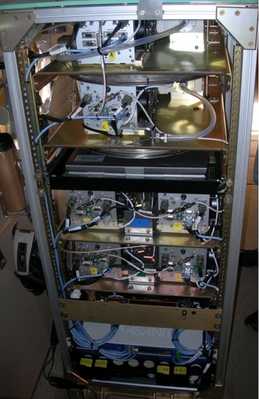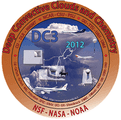The HIAPER Airborne Radiation Package (HARP) is an in situ airborne radiometer developed by NCAR, the University of Colorado, the Leibniz-Institute for Tropospheric Research, Metcon, Inc., and enviscope GmbH. The instrument measures actinic flux and spectral irradiance. HARP operates in the 280-680 nm wavelength range for actinic flux and in the 260-2400 nm range for irradiance. It typically samples data at a frequency of 1 Hz.


Instrument Details
- Spectrometer/Radiometer
- Earth Science > Atmosphere > Atmospheric Radiation > Actinic FluxEarth Science > Atmosphere > Atmospheric Radiation > Spectral IrradianceEarth Science > Atmosphere > Atmospheric Radiation
- Troposphere
- 1 Hz
- Point
- 441-1071 THz (actinic flux), 125-1153 THz (spectral irradiance)
- https://doi.org/10.5065/D6FF3QDN
Samuel R. Hall, Kirk Ullmann
Samuel R. Hall
NCAR, University of Colorado, Leibniz-Institute for Tropospheric Research, Metcon, Enviscope Gmb
NSF
Currently unavailable
Unpublished
 Gulfstream-V 8 Campaigns · 39 Instruments |  Deep Convective Clouds & Chemistry 2012 Northeastern Colorado, West Texas to Central Oklahoma, Northern Alabama 1 Deployment · 19 Data Products
 Asian Summer Monsoon Chemical & Climate Impact Project 2022 West Pacific, South Korea 1 Deployment · 8 Data Products
|